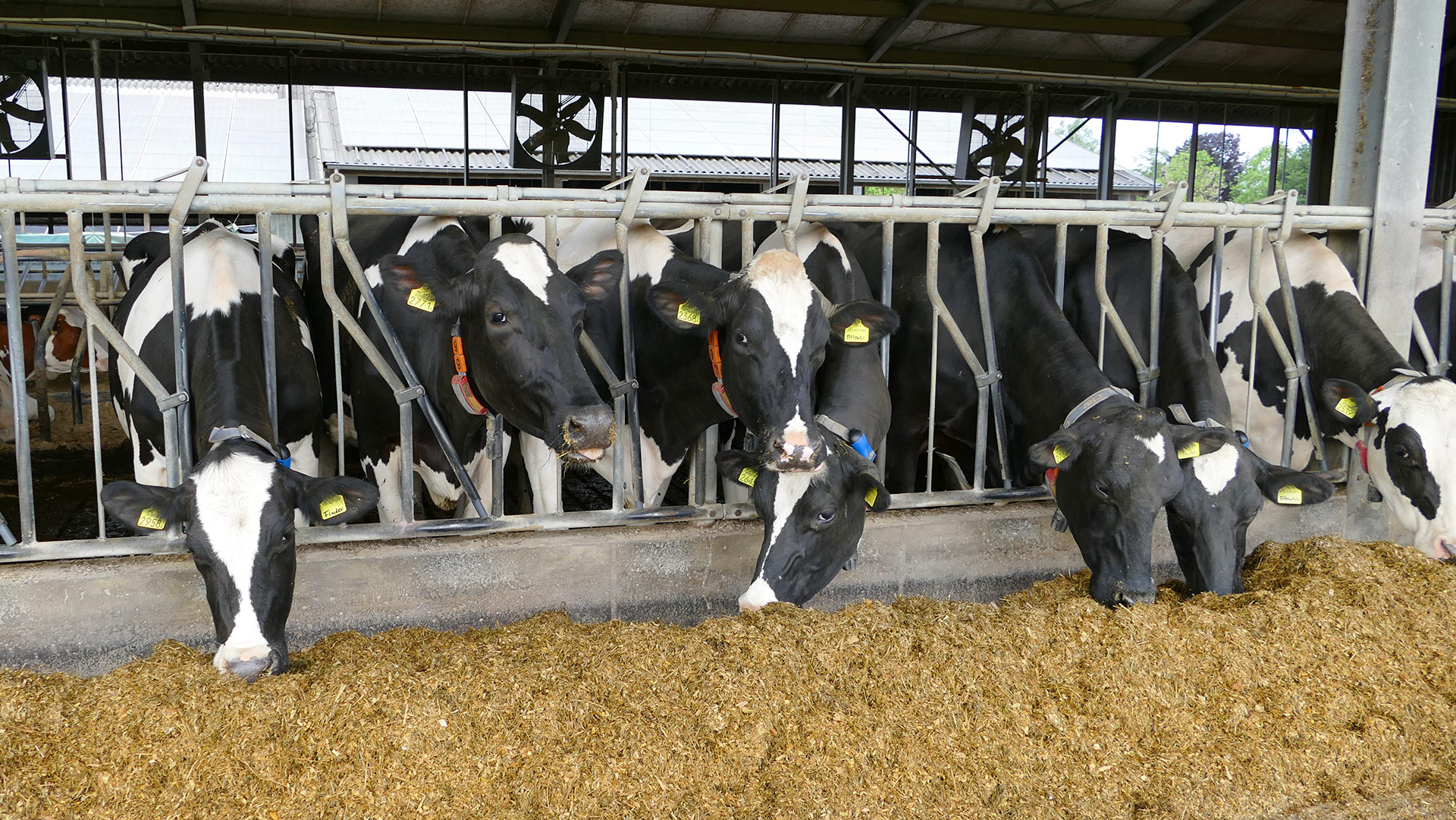

Presenting dairy cows with rations that fit their needs and performance
Providing cows with healthy and well-balanced nutrition
Proper feeding in cattle farming is a factor that has a major impact on the milk yields the cows are able to produce. Only healthy animals consuming feed rations that reflect their performance level will have a long-lasting positive effect on the operating result. Ever-stricter milk quality standards have made it necessary to establish a long-term management system for the feeding of every dairy cow.
Milk cows possess a genetically inherent potential to produce great quantities of milk, but even the cow of the modern age is still a ruminant animal with four stomachs that form an intricate digestive system. This is why the feed ration needs to be perfectly in tune with the performance level of the cows: This is where the Total Mixed Ration (TMR) comes into play. The concept behind this ration is to homogeneously mix all feed components, i.e. base and concentrated feed, instead of feeding them to the animals separately. The lack of separation deprives the animals of the option to select what they prefer. The result is a more uniform feed intake plus regular rumination and, in turn, more regular digestion. Feed mixer wagons provide the farmer with a useful tool that makes mixing the individual feed components a lot easier.
Proper nutrition needs structure
Vital to ensuring proper feed intake is the inclusion of highly structured crude fiber in the feed. To avoid low pH values in the rumen, thus keeping the rumen from acidifying, the combination of different ration components forming the TMR must always retain a sufficient degree of structure. This structure promotes rumination and the salivation that goes along with it.
Effective feed management is not only essential to the milk yield the cows are able to deliver. Improper feeding or switching to a different feed may have a detrimental effect on the animals’ immune system. This endangers not only the animals’ ability to reproduce but also their health overall. The animals may be at risk of forming claw disorders or contracting an inflammation on their udders or mastitis.
Nutrients essential to a cow
All of the vital nutrients a cow needs to consume are contained in their feed. Well-balanced nutrition also includes the intake of base feed (roughage) which may be comprised of fresh grass, herbs, maize, grass silage, dried hay, straw or even maize silage. This roughage is highly structured and less energy-rich than concentrated feed. Adding concentrated feed results in a mix with a higher protein and energy concentration. Cow feeding stuffs containing starch and oil are made of grain, rapeseed, soy, and leguminous plants. Another addition to the mix are minerals that are commonly enriched with vitamins. Also essential to cattle is a supply of fresh and clean water: a cow needs to consume between 80 and 150 liters of water every day. A large portion of this necessary supply is already covered by the animal feed the cow ingests.
Animal health
It is the dairy farmer's responsibility to supply the cow with exactly what it needs by feeding it the right quantities of nutrients and other feed components. The profitability of a farmer’s operation pivots on a high production of premium quality milk. The health and well-being of the cattle should always be put front and center. The ideal cow feed strikes the perfect balance between structured feed, proteins and nutrients. In concert, the individual components keep the cow’s rumen healthy and stimulate rumination. Other positive effects lie in more the expedient growth and improved performance of the dairy cow. Ultimately, the sum of all these benefits adds up to improved milk quality and higher production yields.
Adaptation to the performance level
Adapting the feed rations perfectly to the performance level of a cow is pivotal. It is indispensable to avoid both an insufficient supply and an oversupply with nutrients in order to keep the milk yield of the cows high and keep them from becoming ill. The task of paying attention to feeding in conformity with the animal’s performance level, health and well-being starts when the cows are still calves.
Do you have any additional questions about feeding on a dairy farm? Our experts will be happy to share their professional advice on this topic and on how to use the right feeding equipment!
